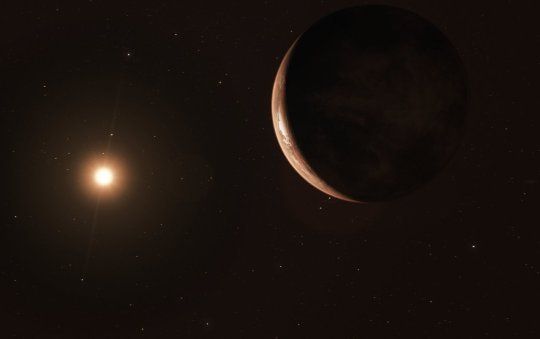Alien Life May exist on Giant Super-Earth 30 Trillion Miles From Home
by Chris Ciaccia January 12, 2019 (foxnews.com)
• Astrophysicists at Villanova University have published a new paper suggesting that the planet that orbits Barnard’s Star– known as Barnard b – could have the potential for extraterrestrial life if water exists on the planet. At 30 trillion miles from Earth, Barnard’s Star is the second closest red dwarf star to our solar system after Proxima Centauri. The planet, Barnard b, was discovered in November 2018.
• The Villanova University astrophysicists are holding out hope the newly discovered planet may also harbor oceans. “Geothermal heating could support “life zones” under its surface, akin to subsurface lakes found in Antarctica,” said Edward Guinan, who with co-author Scott Engle presented the findings at the American Astronomy Society (AAS) in Seattle on January 10th.
• “The most significant aspect of the discovery of Barnard’s star b is that the two nearest star systems to the Sun are now known to host planets. This supports previous studies based on Kepler Mission data, inferring that planets can be very common throughout the galaxy, even numbering in the tens of billions,” said Engle. “The universe has been producing Earth-size planets far longer than we, or even the Sun itself, have existed.”
• [Editor’s Note] Just as significant is the confirmation that “geothermal heating could support “life zones” under its surface, akin to subsurface lakes found in Antarctica.” This supports the concept that there exist geothermal pockets under the ice on Antarctica capable of harboring Nazi bases that were only accessible by submarine, where the Nazi elite escaped at the end of World War II to build its secret space program.
E.T. might actually be out there, scientists have said in a shocking new development. He just might live on a planet 30 trillion miles from Earth, though.
A new paper published by astrophysicists at Villanova University suggests that the planet that orbits Barnard’s Star – known as Barnard b – could have the potential for extraterrestrial life if water exists on the planet. That’s due to the possibility of geothermal heating, which could create an ocean for primitive life.
“Geothermal heating could support “life zones” under its surface, akin to subsurface lakes found in Antarctica,” said Edward Guinan.
The temperature on Barnard B is similar to Jupiter’s moon, Europa, at roughly 238 degrees below zero, but given the likely presence of oceans on the Jupiter lunar satellite, the astrophysicists are holding out hope the newly discovered planet may also harbor oceans.
“We note that the surface temperature on Jupiter’s icy moon Europa is similar to Barnard b but, because of tidal heating, Europa probably has liquid oceans under its icy surface,” Guinan added in the statement.
For comparison purposes, rubber freezes below -98 °F / -72 °C and human blood freezes between -2°C and -3°C.
Guinan, who worked on the paper alongside Scott Engle, presented the findings at the American Astronomy Society (AAS) in Seattle on Thursday.
FAIR USE NOTICE: This page contains copyrighted material the use of which has not been specifically authorized by the copyright owner. ExoNews.org distributes this material for the purpose of news reporting, educational research, comment and criticism, constituting Fair Use under 17 U.S.C § 107. Please contact the Editor at ExoNews with any copyright issue.
